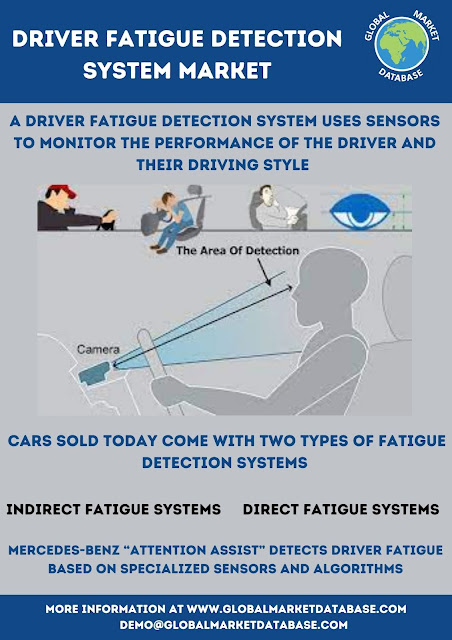Driver Fatigue Detection System Market Research Reports
A driver fatigue detection system uses sensors to monitor the performance of the driver and their driving style to decrease the chances that driver fatigue may cause an accident. In case of fatigue, a reminder appears to take a break. Sometimes, these systems are also linked to adaptive cruise control, making them more effectively deactivated if they detect that the driver is not paying attention.
According to the market database, an indirect system does not monitor a driver directly. The systems instead employ the same camera and sensors used in lane-keeping systems. A forward-facing camera can detect fatigue by monitoring driving style and driving behavior related to exhaustion. An ongoing monitoring process provides data for this purpose. At the beginning of a trip, the system assumes the driver is alert and focused. During later segments of the trip, benchmarks are recorded and stored. In direct fatigue systems monitor drivers directly to determine if they are fatigued. The process usually occurs through an infrared camera mounted within the vehicle, facing the driver.
The camera and its associated components can detect burnout with the use of machine learning technology. According to the market database, Mercedes-Benz “attention assist” detects driver fatigue based on specialized sensors and algorithms. This system analyzes driving habits during the first few minutes of the trip using more than 70 different parameters. The sensor also measures the vehicle's movement and speed. The company's engineers have conducted extensive research indicating that tired drivers often make minor steering mistakes. The Fatigue Detection Systems market and its 10-year business outlook can be understood using Global Market Database. Register now and access 10 year Global market forecast data for 5 markets free.
Read the full blog here: -
https://globalmarketdatabase.com/driver-fatigue-detection-system-market-research-reports




Comments
Post a Comment